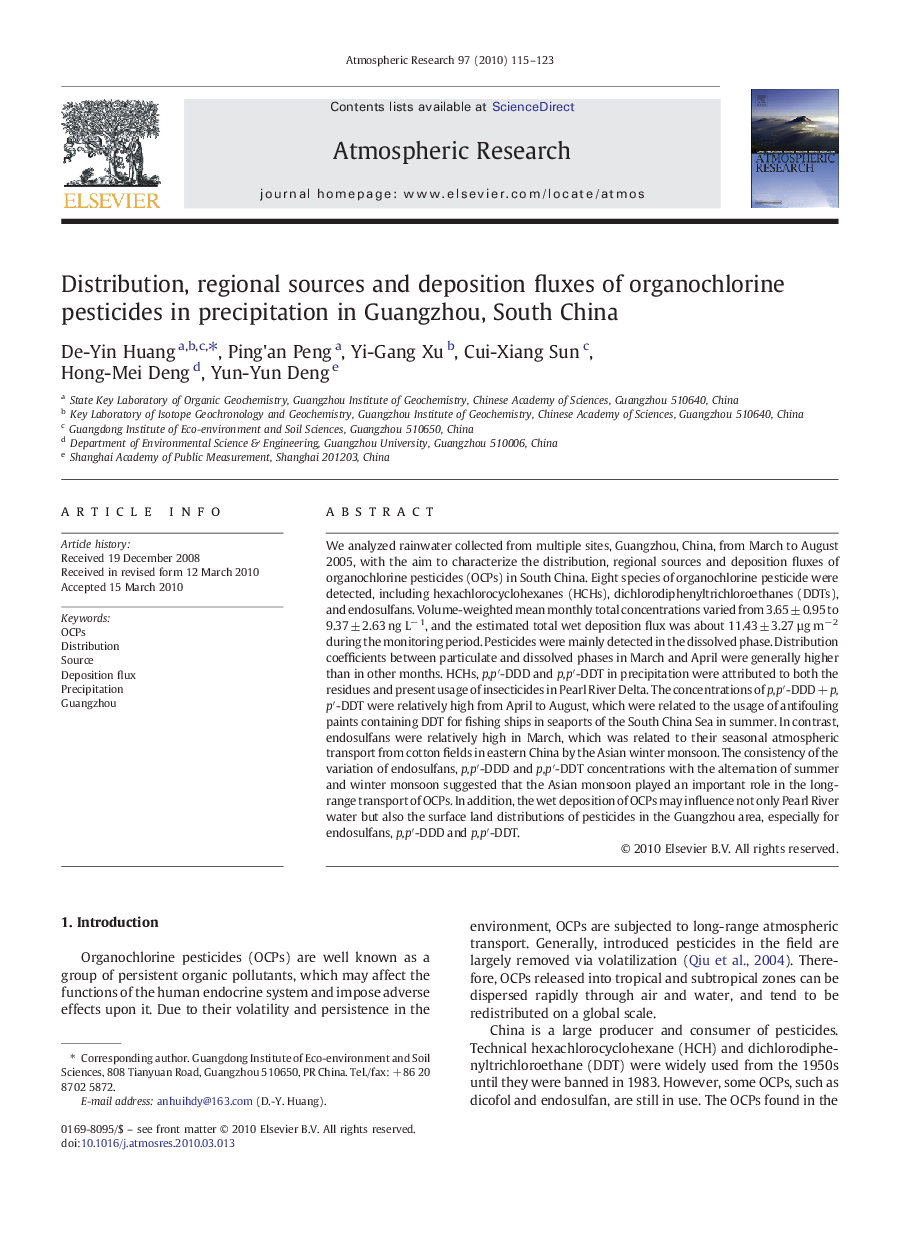| Article ID | Journal | Published Year | Pages | File Type |
|---|---|---|---|---|
| 4450532 | Atmospheric Research | 2010 | 9 Pages |
We analyzed rainwater collected from multiple sites, Guangzhou, China, from March to August 2005, with the aim to characterize the distribution, regional sources and deposition fluxes of organochlorine pesticides (OCPs) in South China. Eight species of organochlorine pesticide were detected, including hexachlorocyclohexanes (HCHs), dichlorodiphenyltrichloroethanes (DDTs), and endosulfans. Volume-weighted mean monthly total concentrations varied from 3.65 ± 0.95 to 9.37 ± 2.63 ng L− 1, and the estimated total wet deposition flux was about 11.43 ± 3.27 µg m− 2 during the monitoring period. Pesticides were mainly detected in the dissolved phase. Distribution coefficients between particulate and dissolved phases in March and April were generally higher than in other months. HCHs, p,p′-DDD and p,p′-DDT in precipitation were attributed to both the residues and present usage of insecticides in Pearl River Delta. The concentrations of p,p′-DDD + p,p′-DDT were relatively high from April to August, which were related to the usage of antifouling paints containing DDT for fishing ships in seaports of the South China Sea in summer. In contrast, endosulfans were relatively high in March, which was related to their seasonal atmospheric transport from cotton fields in eastern China by the Asian winter monsoon. The consistency of the variation of endosulfans, p,p′-DDD and p,p′-DDT concentrations with the alternation of summer and winter monsoon suggested that the Asian monsoon played an important role in the long-range transport of OCPs. In addition, the wet deposition of OCPs may influence not only Pearl River water but also the surface land distributions of pesticides in the Guangzhou area, especially for endosulfans, p,p′-DDD and p,p′-DDT.
